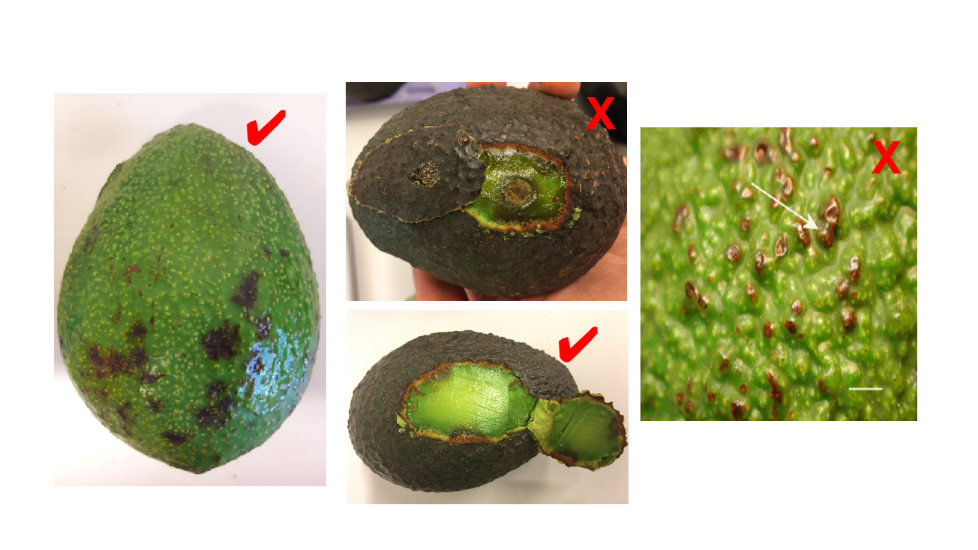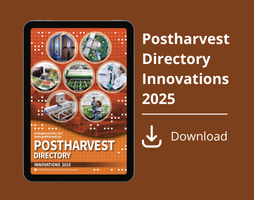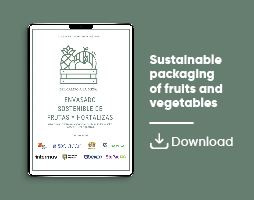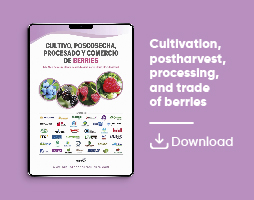News
Mitigation of black spot development in avocado 'Hass' through CA
During PostharvestMED Romina Pedreschi explained the research by Núñez-Lillo G. et al, detecting the compounds involved in black spot manifestation and that fruits under CA did not show the dark lesions

Exocarp blackspot disorder in “Hass” avocado (Persea americana Mill.) manifests as dark lesions after cold storage, impacting postharvest fruit quality and marketability.
This study aimed to elucidate the molecular mechanisms underlying blackspot development and its prevention under controlled atmosphere (CA) conditions through an integrative multiomics approach combining transcriptomic, metabolomic, and hormonal analyses.
Black spot symtomps in aguacate, showing the pulp is not affected
The research
Export-quality “Hass” avocados were harvested at early maturity and stored for 30 days at 5°C under either regular air (RA) or CA (4 kPa O₂/6 kPa CO₂) conditions.
Exocarp tissues from healthy and blackspot-affected fruits were collected and subjected to RNA sequencing, comprehensive metabolite profiling (polar, non-polar metabolites, fatty acids, phenolics), and targeted hormone quantification.
Results
Results revealed that blackspot-affected tissues accumulated higher levels of jasmonic acid, salicylic acid, gibberellins, and long-chain fatty acids, accompanied by upregulation of stress-related genes, including several peroxidases, lipoxygenases (PaLOX2), β-galactosidases (PaBGAL17, PaBGAL15), and transcription factors (PaWRKY55, PaZIFL1).
Conversely, fruits stored under CA exhibited elevated levels of indole-3-acetic acid (IAA) and isopentenyladenine (iP), correlating with the absence of blackspot symptoms.
Candidate metabolites (oleic acid, myoinositol) and transcription factors (PaMIF2, PaGRF9, PaMYB4R1) were associated with the maintenance of exocarp integrity under CA storage.
The multiomics integration uncovered strong correlations between specific hormonal profiles, fatty acid composition, and gene expression patterns linked to both blackspot occurrence and its prevention.
Notably, evidence suggests that the JA biosynthesis pathway, fueled by α-linolenic acid utilization, plays a pivotal role in blackspot symptomatology.
These findings advance our understanding of blackspot disorder in avocado and provide molecular targets for developing strategies to prevent its occurrence during postharvest storage.
This research was supported by ANID-Fondecyt N°1220223, ANID-ICN2021_044 and ANID
FOVI240006. Corresponding author: romina.pedreschi@pucv.cl
Picture - Questions after Romina Pedreschi's presentation; chair at the left, Lorenzo Zacarías, IATA, Spain; asking P. Tonutti, Institute of Crop Science, Scuola Superiore Sant'Anna, Pisa. Romina Pedreschi, Millennium Institute Center for Genome Regulation (CRG), Santiago, Chile
Source
Control atmosphere storage mitigates black spot development in Hass avocado exocarp
Núñez-Lillo G., Hernández I., Olmedo P., Ponce E., Arancibia-Guerra C., Álvaro J.E., Carrasco Pancorbo A., Beiro-Valenzuela M.G., Carrera E., Baños J., Campos D., Meneses C., Romina Pedreschi
PostharvestMED, 9th National Conference of the SOI Working Group on Postharvest Management of Mediterranean Crops, 17-19 September 2025, Palermo, Italy, https://www.postharvestmed.com












